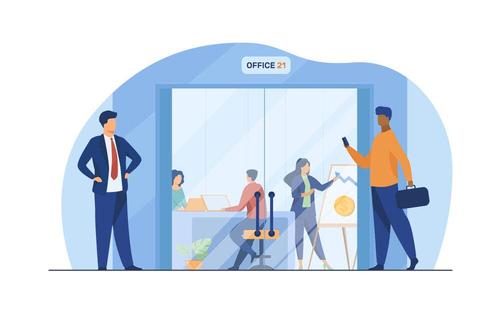Managers guide to good office etiquette


Our Guide to Good Office Etiquette provides essential insights, promoting a positive work environment by outlining respectful and professional behaviour expectations in the workplace.
- Includes template + 15-minute call with an expert.
- Instantly download as Word / PDF / plain text, or send by email.
- 12 months’ access, with all updates to this page provided free of charge and notified to you.
- 427 words over 2 pages.
- Last updated 14/01/2024.
- UK-specific accuracy.
- Suitable for use in other territories; check local laws first.
Managers guide to good office etiquette
Maintaining good office etiquette is essential for creating a positive and productive work environment. Here's a guide to help you navigate the professional landscape with courtesy and consideration:
1. Punctuality:
-
Arrive on time for work, meetings, and appointments.
-
Notify colleagues if you anticipate being late or unable to attend a scheduled meeting.
2. Communication:
-
Use professional language in all written and verbal communication.
-
Respond promptly to emails and messages.
-
Avoid interrupting colleagues during conversations.
3. Respect for Workspace:
-
Keep your workspace tidy and organised.
-
Respect shared spaces, and be mindful of noise levels.
-
Personalise your workspace with discretion.
4. Meeting Etiquette:
-
Come prepared with
You're currently viewing a limited preview. For instant full access, purchase this item or a parent bundle.
This Guide to Good Office Etiquette offers a concise resource to cultivate a professional and harmonious workplace environment.
This guide outlines key principles of etiquette, covering communication, workspace etiquette, and collaborative practices. I
ts purpose is to enhance workplace culture, foster positive relationships, and promote a respectful and inclusive atmosphere among colleagues, ultimately contributing to a more productive and enjoyable work environment.
It is usually sent/actioned by the Employer / HR to the Employee .
It should be actioned as part of onboarding, or as and when required.
Compliance
Compliance
This Managers guide to good office etiquette incorporates relevant UK laws and HR standards, including those listed below:
-
Equality Act 2010: Guides good office etiquette by ensuring fair and equal treatment, preventing discrimination based on protected characteristics.
-
Health and Safety at Work Act 1974: Encourages a safe and respectful office environment, fostering good etiquette to ensure the health and well-being of employees.
-
Data Protection Act 2018 (incorporating GDPR): Mandates the handling of personal data in accordance with data protection principles, reinforcing privacy etiquette.
-
Employment Contracts and Policies: Internal policies derived from employment contracts may outline specific expectations regarding office etiquette.
-
Common Law Duty of Mutual Trust and Confidence: Establishes an implied duty in employment contracts, encouraging positive workplace relationships and respectful behaviour.
Frequently Asked Questions
Frequently Asked Questions
-
Can I use this template in my small business?
Yes. The Managers guide to good office etiquette is designed to be flexible and suitable for organisations of all sizes, including small businesses and charities. It follows UK employment law best practice, so even if you don't have an in-house HR team, you can confidently apply it.
-
Is this template compliant with 2025 UK employment law?
Absolutely. All of our templates are drafted with the latest ACAS guidance and UK employment legislation in mind. We review and update them regularly, so you can be confident they remain compliant.
-
Can I customise it for my organisation?
Yes, we highlight the areas that you need to update with your own details, and where you need to make decisions to suit your situation. This saves you time and ensures that you meet best practice.
-
Do I get instant access?
Yes. Once purchased, you'll be able to download it instantly. Templates are provided in editable Word or Excel format so you can customise them easily, and in PDF format for easy sharing.
-
What if I need more help, not just this template?
If you're looking for broader support, we also offer toolkits and library bundles that include this template, along with other HR templates and policies for fully managing your situation. These may be more cost-effective if you need deeper advice.
-
Why should I use this, and not AI to generate this template?
The risk of using a free AI-generated template 'without review' includes your legal exposure, missing context, and no awareness of the wider process. Purchasing from us mitigates that risk.